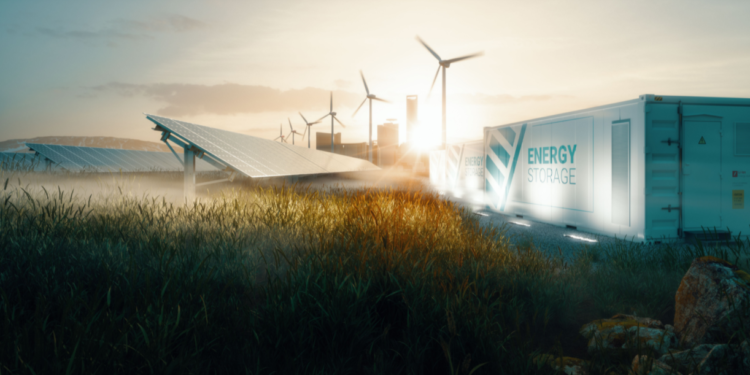Worth its salt: Ohio startup aims to lower energy storage costs with molten salt system
Salts, highly heated until they’re practically liquid, are a critical piece of Cratus’ large-scale energy storage technologies. The startup is commercializing a high temperature molten salt thermal energy storage system that can be paired with any power or heat source, but it works particularly well with solar power and nuclear power generation, said founder Andy Sherman.
Cratus’ system is in the testing phase, but the final product is expected to offer at least three-times cost savings over other long-duration energy storage. Their solution could cost about $200-250/kW hour of energy storage, compared with competitors like Tesla whose individual energy storage units are roughly estimated to cost $600/kW hour following a recent price cut.
The units also are smaller than lithium-ion battery packs, non-toxic, can be safely transported, and work at higher heats than other systems, Sherman said.
The technology
The thermal storage technology relies on phase-change materials: substances that release or absorb significant energy when they change states, such as moving from solid to liquid. Salt is stored in Cratus’ system, and serves as a phase change material that releases energy when it is heated at high temperatures with silicon alloys to create a slurry, or semi-liquid material.
While molten salt already holds a good deal of energy, Cratus’ patent-pending materials could triple their energy storage capability. And its system can work under 30% higher temperatures than other storage systems, allowing Cratus systems to produce three times higher efficiency and output.
Some molten salt systems use two tanks to separate the hot and cold materials. But Cratus’ system uses a single tank separated by an insulated device that directs fluid flow, called a baffle. That allows Cratus to cut its system size and cost in about half.
Two-tank systems “need multiple pumps and you use twice as much material because you’re pumping it from a cold tank to a hot tank and back again as you run through the power generation,” Sherman said.
Despite the smaller footprint, the next-generation storage units hold a lot of power.
“We’re almost an order of magnitude higher energy density in terms of the space they take compared to any of the alternatives: compressed air, pumped hydro, flow batteries, or lithium-ion batteries,” Sherman said.
Each unit has a 2.5 MW to 5 MW storage capacity and provides two to 20 hours of power. The system is modular and each storage unit is housed in a container — essentially a shipping container — so each can be transported and combined with other units for scalable energy storage.
“You can stack them together and hook them up to the same heat exchangers if you want longer power or more power,” Sherman said. “They’re truly scalable. That allows us to be highly efficient.”
On being Midwest-based
Sherman has found great value in building his company in the Midwest rather than a traditional startup hub city.
“I started my first company in California. When we went to scale that up, the real estate leasing and other costs like manufacturing made it almost non-viable,” Sherman said. “Here in the Midwest… it’s a good place [for startups]. It’s affordable and I haven’t had problems attracting employees.”
Still, securing capital and other startup support can be more challenging in the Midwest, he said. But participating in Warren, Ohio’s BRITE Energy Innovators incubator has helped.
“Let’s face it: Building connections can be incredibly inefficient and time consuming,” Sherman said. “BRITE is really good at the connections… We tap into their expertise in marketing, design, helping with pitch decks, making introductions.”
He encourages other cleantech startups to leverage their regional incubators and accelerators.
“Tap into those incubators. They’ve got a pretty good network of support in the Midwest, and there’s probably less competition for it than those on the coasts,” he said.
What’s next
Cratus has been partnering with the U.S. Department of Energy and the University of Wisconsin-Madison to test the product prototype’s components, including pumps, valves, and heat exchangers. While the components are proven, the entire system as a whole needs further demonstration testing, Sherman said.
Currently, Cratus is raising capital and in the demonstration phase to prove the overall product’s performance and durability. Cratus is probably two to five years from bringing its product to market, Sherman estimated.


